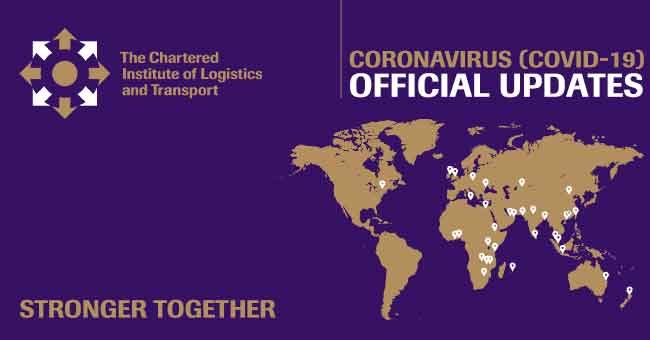In considering resuming areas of the supply chain closed by the Covid-19 response, global shipping is looking to adjust to the huge loss of capacity in air transport, large shortfalls in containers and ocean fleets, and high risk to crews who man all forms of transport whether land, sea or air.
Sabrina Zang of CILT Ireland, who has much experience of shipping to and from Asia, points to the areas to consider:
Across modes
- Communication will be key.
- Stay in regular contact with your logistics provider to develop flexible solutions, limit mistakes, and mitigate miscommunications.
- Understand how your logistics providers plan to fulfill their obligations and hold their vendors accountable.
- Consider shipping by rail or air for semi-urgent shipments.
Trucking
- Allow for a 2-3 day buffer for freight schedule changes (equivalent to blank sailings).
- Make sure your shippers ask their truckers to prepare all necessary passing licenses. Pay special attention to the exact location of pick-ups.
- Consider barge shipments in areas close to Shenzhen and Shanghai where there are lots of water connections into the cities. Barge shipping will become the best option if there are burdensome roadblocks or checkpoints on the roads.
- Most barges offer around 100 TEUs of capacity and can easily connect with the mother vessel.
Air
- Cargo space on passenger flights will resume, but not quickly. Key carriers’ most optimistic estimate is the end of April or mid-May.
- Be open-minded and flexible with alternative choices.
- Look to inland regional airports. Unexpected locations may be better able to accommodate air cargo.
- Split shipments – something is better than nothing.
Ocean
- Look to premium options based on dynamic pricing to guarantee space. This approach is good for hot shipments.
- Sea-Air Option: Integration of two different transportation modes by using ocean freight initially to connect to an air hub and then continue as air freight. This could be suitable for semi-urgent shipments.
- Expedite ocean shipments from China to the US with a transload solution.
- Ocean to US domestic trucking allows shipments to get into the mainland quicker, avoiding congestion.
- When the market picks up, the US market infrastructure will be under stress. Consider port congestion, and what the expectations are around delivery dates.
- If negotiating contracts, aim to reduce uncertainty and focus on the negotiation before rates expire to ensure no disruptions within commercial issues and space allocations.
- Generally speaking, we expect contracts to be concluded during the season.
This is an example of a business response from Ireland which we are sharing as part of our global best practice resource to help you think about and determine appropriate responses locally.

